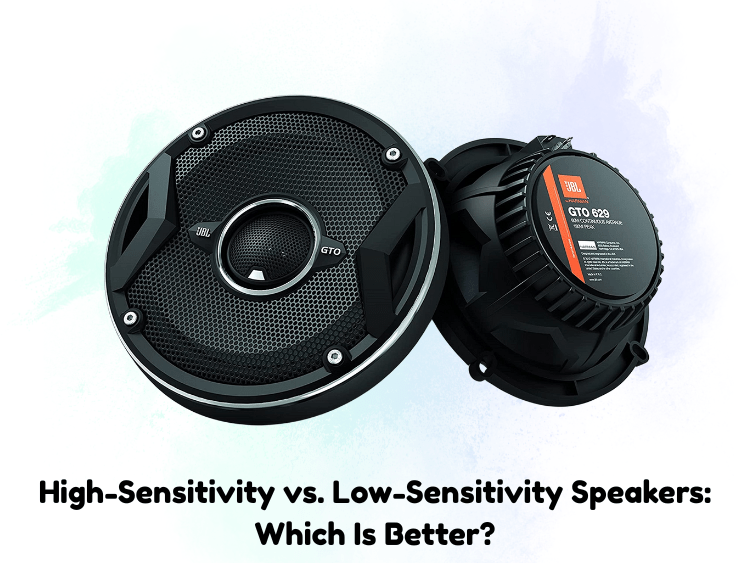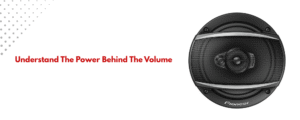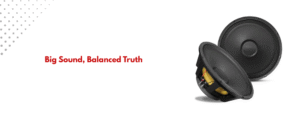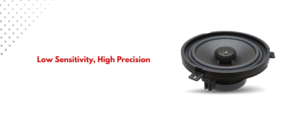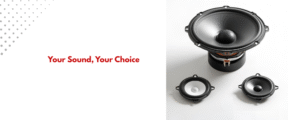When shopping for speakers, terms like “watts” and “frequency response” usually steal the spotlight. But there’s another important metric you shouldn’t overlook: speaker sensitivity. It may not sound thrilling, but sensitivity plays a big role in how your system performs, especially in real-world settings. In this article, we’ll break down what speaker sensitivity means and help you decide whether high or low sensitivity is better for your needs.
What Does Speaker Sensitivity Mean?
Speaker sensitivity refers to how efficiently a speaker converts power (from your amp or receiver) into sound. It’s usually measured in decibels (dB) and is determined by playing a 1-watt signal through the speaker and measuring the volume at 1 meter away.
- A 90 dB speaker produces 90 decibels of sound with just 1 watt of power at 1 meter.
General Guide:
- High-sensitivity speakers: Rated 90 dB or higher
- Low-sensitivity speakers: Rated below 90 dB
It might seem obvious to assume “louder is better,” but there’s more nuance when it comes to performance, power, and sound quality.
Pros and Cons of High-Sensitivity Speakers
✅ Pros:
- Efficient with Power: They require less power to reach the same volume as low-sensitivity speakers. Perfect for low-watt tube amps and compact systems.
- Great for Larger Spaces: Can easily fill bigger rooms without needing a high-powered amp.
- Energy Friendly: Good for energy efficiency and smaller gear setups, offering solid performance even at lower volume levels.
❌ Cons:
- More Prone to Noise: Because they amplify the signal so efficiently, they can also make amp noise (hiss or hum) more noticeable.
- May Lack Precision: Some budget high-sensitivity models sacrifice detail and imaging in favor of loudness.
Pros and Cons of Low-Sensitivity Speakers
✅ Pros:
- Often More Accurate: Common among high-end audiophile speakers, they emphasize detail, imaging, and tonal balance.
- Pair Well with Powerful Amps: It can handle and benefit from higher wattage, producing rich, full sound.
- Better Control Over Dynamics: Typically offers tighter bass and better articulation of complex music.
❌ Cons:
- Power Hungry: They need significantly more power to reach the same volume as high-sensitivity speakers.
- 2. Less Suitable for Small Setups: Not ideal if your amplifier is underpowered or you’re building a compact, energy-efficient rig.
Which One Should You Choose?
There’s no one-size-fits-all answer. The right choice depends on your setup, preferences, and listening space.
Choose High-Sensitivity If:
- You’re using a low-powered amp or receiver (like vintage tube amps).
- You want to maximize volume without pushing your gear too hard.
- Your room is large and open and needs more output.
- You prefer an energy-efficient setup.
Choose Low-Sensitivity If:
- You have (or plan to get) a powerful amplifier.
- You prioritize accuracy and detail over loudness.
- You listen in a treated or smaller room where precision matters.
- You enjoy complex music genres like jazz, classical, or ambient.
Real-World Examples
- Klipsch speakers (known for their horn-loaded design) often have very high sensitivity, making them ideal for home theaters and dynamic music genres. They get loud with minimal power and are perfect for listeners who want impact and efficiency.
- Bowers & Wilkins speakers, on the other hand, may have lower sensitivity, but when powered properly, they deliver stunning clarity, spatial depth, and tonal accuracy—perfect for critical listening and audiophile setups.
- 5Core replacement speakers strike a solid balance between power handling and clarity. Designed with robust components and wide frequency coverage, they’re great for live events, professional setups, and versatile playback, offering both performance and durability at an accessible price point.
Final Thoughts
Sensitivity is just one piece of the speaker puzzle—but an important one. High-sensitivity speakers offer efficiency, volume, and energy savings, while low-sensitivity models often deliver richer sound and better precision—if powered correctly. Before buying, consider your amp, room size, and listening habits. Then, let your ears decide.
Want access to premium speaker components and expert guidance? Join a business partnership program and enjoy exclusive benefits like bulk discounts, fast shipping, and top-tier customer support to help grow your audio business.

